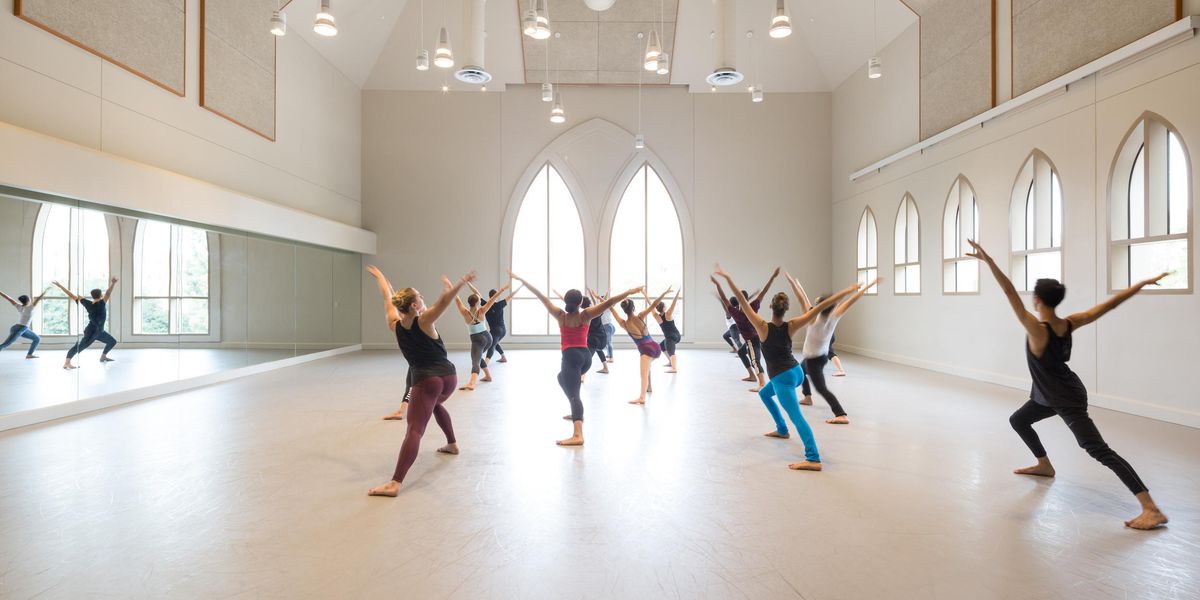A Tale of Two Colleges
Dancers share why they decided to transfer—and how that decision changed their careers.
It didn’t take Sarah Konner long to realize she was at the wrong college. “Boston Conservatory offered too few improvisation and composition classes,” says Konner. “And the academics weren’t challenging enough for me.”
Her choice to transfer was a tough but not uncommon decision. In fact, according to the National Student Clearinghouse Research Center, about one-third of all college students switch institutions before earning a degree. “Students sometimes develop a script in their heads about how fabulous a school is going to be,” says J. Tawa Sina, PhD, training director at Michigan State University’s counseling center. “Then their real-life experience doesn’t match the fantasy, they become disappointed—and desperate for a change.”
Feeling like you’re in the wrong place can be frightening. But college is a time to learn what you want as a dancer—and that often changes from what you wanted in high school. “Maturing just a little bit makes a huge difference in where you see your life going,” says Sina, “and that’s a normal part of the college experience.”
The line between your average freshman freakout and the need for a complete college overhaul isn’t always easy to spot. And Sina warns that without a lot of internal questioning, plus conversations with those you trust and careful planning, transferring may not initially give students what they’re looking for.
In Konner’s case, she thought that by leaving the conservatory setting she was giving up on a dance career. But as an environmental science major at the University of Michigan, she missed the studio and soon added a double major in dance.
“I think having a well-rounded education has made me a more interesting artist,” says Konner, who now performs her own choreography at venues such as The Berkshire Fringe Festival, Triskelion Arts and Judson Church. “I take into account political ideas or things happening in the world. For me, educating myself as a whole person was essential.”
Scott Schneider, on the other hand, started college with what he thought was the perfect blend of dance and academics as a double major in dance and biology at Muhlenberg College. But he craved more time and support to dabble in choreography.
At an American College Dance Festival Association event his sophomore year, he saw a performance by eight male students from Rutgers University’s Mason Gross School of the Arts. “That sparked a little curiosity in me,” says Schneider, who was one of only two male dancers in his class at Muhlenberg.
He was hesitant to leave behind the connections he’d made at Muhlenberg. “I’m a people person who likes to please everyone,” he says, “but I had to think about what would be best for my future as a dancer.” Schneider signed on to start his junior year at Mason Gross.
The technical challenges were a shock. “My classical modern training was behind,” he says. “Plus, the daily schedule was so intense.” But after a few months, Schneider knew he’d made the right decision: His dancing was now strong enough that a backup plan could wait.
“In the end, I got the best of both worlds,” says Schneider, who since graduating in 2011 has danced with Stephen Petronio Company, Cedar Lake Contemporary Ballet and Randy James’ 10 Hairy Legs. “I was able to make double the relationships and experience double the great teachers.”
Jenna Pollack knew from the start that she wasn’t enrolling in a school that was her perfect fit. She started at the Alonzo King LINES Ballet BFA program at Dominican University with her heart still set on The Juilliard School. She’d just barely missed the cut at her audition, so she reapplied and was accepted.
Juilliard was everything Pollack hoped it would be. She was offered a range of interdisciplinary opportunities and even co-directed a program that brought students to Tanzania.But with only a few academic credits from Dominican University counting at Juilliard, she had to take her freshman year over again. “Also, coming in a year older made me feel like I had more to prove,” she says.
Pollack, who now dances with the Metropolitan Opera, doesn’t feel the extra year held her back. “There’s so much stress to get into the right place. But you deserve to be where you want to be. If you’re in a program you don’t love, that doesn’t mean you’ve failed. In fact, you’ve done the opposite: You’ve discovered what you need to make yourself happier.”
A Financial Fix
Sometimes, starting out at a school that’s not a perfect fit is a financial necessity. Amos Oliver III, for example, knew that a conservatory was where he belonged—he just couldn’t afford to get there. So he chose an inexpensive option close to home. “Community college was really my only choice,” says Oliver. He used his year at Santa Fe College in Gainesville, Florida, to prepare for auditions, with his heart set on The Boston Conservatory. “I hoped that if I came back improved, they’d realize how badly I wanted this and offer me more money.” It worked, and he finished out his degree in Boston.
Now with Lexington Ballet, Oliver is happy with his college path, but he stresses that dancers can usually avoid settling. “I wish I’d asked for help,” he says. “In addition to scholarships, I could have asked for sponsors, made a donation page or even washed cars to raise money. Usually, if you want something bad enough, you can make it happen.”
Photos from top: Sarah Konner with Austin Selden, by Peter Smith, Courtesy Konner; Scott Schneider, by Paul Wusow, Courtesy Schneider; Jenna Pollack, Courtesy Pollack; Amos Oliver III, by Brian Mengini, Courtesy TBC.




